This is the second post in my series, “How I Sold $100K My First Year in Business.” When I look back at my first year—as objectively as possible from six years hence—and I ask myself how I sold $100K in the first 365 days, the first two things I see are:
#1. I specialized in an in-demand, sells-itself kind of service: wedding photography. People plan and budget for their wedding. You don’t have to convince them that they want a wedding photographer, just that you’re the right one for them. That clears a major hurdle from your marketing efforts.
Selling portrait photography (and many other creative services) requires that more time be spent marketing to and educating prospective clients before they’re convinced of the value and willing to make a purchase. Also, because people can buy most services anytime—after all, they’re not predicated on one-time events—they’ll tend to wait unless there’s a compelling reason not to. But that’s a topic for another day.
My #1 takeaway from my early business success is that my primary service was wedding photography. That’s not to say I didn’t also shoot portraits, because I did. But while portraits accounted for 62 percent of my session count, they produced only 16 percent of my total revenue year one. Weddings accounted for 38 percent of sessions and 84 percent of revenue.
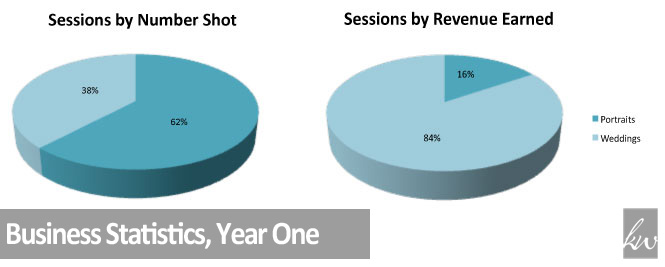
My second takeaway is:
#2. I was decent at it. I was by no means an exceptional photographer—my work still doesn’t hang in MOCA—but I was a decent photographer. Photography was a skill that I’d practiced for more than 10 years before I hung out a professional shingle. I had taken several university-level classes and spent a semester abroad at the world famous FAMU in Prague, studying with masters like Viktor Kolář and Miroslav Vojtěchovský. My work had been published during college and I had been paid to photograph events and exteriors when I worked at a preparatory school following college. I was also a regular attendee at museum and gallery shows. In short, I’d honed my craft, and I don’t believe you can call yourself a professional until you have done so.
You may be wondering what decent means. Since it means something different to each of us, here are some spreads from my very first wedding clients’ album so you can decide for yourself:
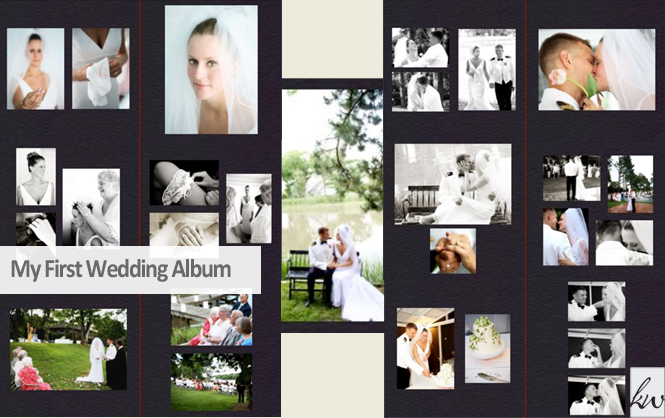
On the topic of talent, laymen often can’t tell the difference between exceptional and passable—and they don’t need to. There is a reason my husband owns Bose noise-canceling headphones and I don’t: as a audiophile, he can tell the difference; I can’t. And when it comes to photography, most clients can’t tell the difference between good enough and outstanding, but that doesn’t remove the burden we have as service professionals to be as good as we can be.
So, there you have it. The first two takeaways from my first year as a photographer. Do you have any questions or need a clarification? Please shout it out in the comments.
Thanks,

If you missed a post in my “Business Success” series, here they all are in order:
I am in India. Hubby and I left home Wednesday, November 20th, arrived in Bangalore on Friday, the 22nd, and we expect to be here until late January, possibly longer.
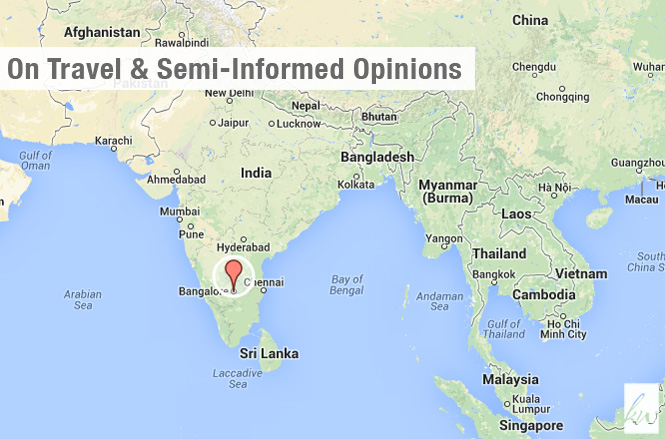
When I first confirmed to my family that we were indeed relocating to India temporarily, my mom burst into tears. Here I am in my mid-thirties, having traveled to or lived abroad in 25 countries including Eastern Europe during the 90s (when my aunt was still referring to the region as ‘the Soviet Union’), Africa, and Southeast Asia, and my mom is apparently terrified for my safety in India. To my knowledge, she’s never had such an extreme reaction to my travel plans before. So, what’s the deal?
Well, I’m sure the news hasn’t helped. Time magazine recently declared “India’s Rape Epidemic,” as they’re calling it, the ninth top news story of 2013, and there really are appalling viewpoints among some of India’s leaders. Of course, what the news reports isn’t the full story.
It hasn’t been the only thing guiding my mom’s opinions, either. As she wrote in an email before we left, “All my peeps say please don’t go to India, it isn’t safe for Americans.” Every time I’ve spoken to her since arriving here, she’s had another pronouncement. The latest: “They have no respect for human life and, if you witness an accident, please don’t help anyone because you’ll be burdened with supporting their entire family for life.”
Hubby was quick to research the second claim. Yes, it’s true that India doesn’t yet have a good samaritan law, but support is growing for one.
As to the other point—that Indians have no respect for human life—I have no idea how anyone could come to this conclusion about another culture, and particularly about India. Did you know that India has the lowest meat consumption of any country? Two out of every five Indians are vegetarian or lacto/ovo-vegetarian. Why is this relevant? Because in India, the vegetarian lifestyle largely stems from a mandate of nonviolence toward all living things—as outlined by many of the country’s religions, including Jainism, Buddhism, and Hinduism. And remember Gandhi, father of nonviolent civil disobedience? Yeah, ’nuff said.
Back to the news, though, what would foreigners think about America if all they read were the latest headlines: thrill killings, rapes (including those orchestrated by teenage girls), muggings, drug use, and an alarming tendency to lock up its citizens—and that’s just in the last month. But, America’s a big country, you might be saying. Darling, so is India.
India is the seventh largest country by land mass—behind Russia, Canada, the US, China, Brazil & Australia—and second largest in population, behind China. It is incredibly diverse both geographically and culturally, something I experience daily. Brian and I are living in a quiet neighborhood north of the city center, a place Christians, Muslims, Buddhists, and Hindus all call home. And we’re not alone. There are other foreigners here, too, including everyone else in our building.
Although nowhere is 100% safe, I take precautions to ensure my safety, too—I dress conservatively, I don’t wander the streets alone at night—and to date, I have had ZERO inappropriate encounters. No one has made obnoxious comments, eve-teased, or anything else. Sure, people stare sometimes, both women and men. And sure, auto rickshaw drivers try to hit me up for an extra buck or two…they know I can afford it. But most everyone we encounter is friendly and helpful, and some are downright welcoming, like the staff and patrons at our local coffee shop.
You see, we’re doing fine. So this is a plea to whoever has been filling my mom’s head with negativity: Please stop. It serves no one to bring up every possible thing that could go wrong when her daughter and son-in-law are living abroad.
And, if you believe as we do, that what you focus on expands, all of this negativity is actually creating more opportunity for bad situations. So again, please, please stop.
Thank you,

Recently, I asked the Facebook-verse what they’d like to know most about business. My cousin-in-law, the first responder, said, “I’d most appreciate honesty, rather than bluster about how someone became successful.” Her comment was dittoed by several others, and so here we are, where I will share my story of business success, more specifically how I sold $100K of photography products and services in my first year. Hey, you asked for it! 😉
Before I get into the details, I’d like to mention a few things:
- Earning $100K is only one definition of success, and not one that I particularly subscribe to in my day-to-day life. However, this is a story I have, and so this is the story I’ll share.
- The list that follows is not meant to be prescriptive, nor is it meant to encourage anyone to do anything. You won’t simply be able to follow the steps to create your own version of success. Who’s to say your version matches this one anyway?
- It is also not meant to be lecturing or boastful. The list below is simply the lessons that I take away when looking back at my first year in business. As they say, hindsight is 20/20, so things that are apparent now—six years later—wouldn’t necessarily have been obvious when I was living it.
- Also, I’d like to acknowledge that the success I experienced was doubtless a result of many things, including timing (it was pre-economic downturn, during 2006-2007), location, preparation, conscious choice, and even dumb luck.
So without further ado, here are the “secrets of my success”:
- I specialized in an in-demand, sells-itself kind of service.
- I was decent at it.
- I surrounded myself with successful peers and got their referrals.
- I was excited.
- I was in a right-sized market.
- I was probably too cheap.
- I trusted my instincts.
- I looked and acted the part.
- I did the work.
- I believed in myself and acted accordingly.
What do you think? A good start, I think, but maybe this list is too pithy and vague. I hear ya, that’s why this post is the start of a new series through which I’ll delve into each of the above in greater detail. Check back next Wednesday for more about specializing in an in-demand service and knowing your craft.
In the interim, do you have any questions? Shout ’em loud below.
Cheers,

It always saddens me when I find an interesting crowdfunding project that I know is going to fail. And it frustrates me when I find a project that I would support—if only they’d given me a reason to do so. But they didn’t, and so I don’t. In the interest of keeping others from making the mistakes that I see so often—and in the hope that more people will plan for successful crowdfunding campaigns—here is my list of 8 essential steps to take before you launch your campaign:
-
Set a realistic goal. On Kickstarter, 75% of funded projects raise less than $10,000. Check out the chart below for more details. Before you start a campaign, ask yourself how much you really need and whether you have an audience that can help get you there.
-
Leverage your personal network. Without your network, you won’t get far. Crowdfunding isn’t free money. According to Kickstarter, 80% of projects that raise at least 20% of their target are ultimately successful. To take that a step further, 98% of projects that raise at least 60% of their target finish with success. Can your fans get you to 20%? That’s a great start. How about 60%? Then you’re almost guaranteed a successful close. On that note…
-
Make sure your crowd can use the Interwebs. This sounds like a duh, but I’ve consulted on a crowdfunding project where the supporters needed step-by-step instructions to leave pledges. The project was ultimately successful, but it took a lot of coaching on the part of its creators to get fans to the crowdfunding site and submitting pledges.
-
Engage, engage, engage. Announce your project well in advance of its launch and post frequent updates while it’s open. In that vein, it may seem like a good idea to have a long—even unlimited—project duration, but shorter projects actually fare better. Take a lesson from the ever-more-sensationalized television news: People’s attention spans are short. Grab ’em and keep ’em engaged.
-
Start your rewards small. The most popular pledge amount is $25, and 90% of pledges fall below $100. Can you begin your rewards as low as $1 or $5? Do it.
-
Make your rewards compelling. Look at your reward options from an outsider’s perspective. What would make you pull out your hard-earned cash and plunk it down in support of a project? If you’re fundraising for photography, build postcards, signed prints, books, and photo experiences into your reward list.
-
Ensure your rewards make sense, and make it easy for people to move up your pledge ladder. Yep, this is my third tip focused on rewards. Your rewards are make-it-or-break-it material. They are also a ladder, one that should entice your fans upward and make it easy for them to join the fun. Ideally, make each reward build on the next. For example:
- $1 or more: Our deepest thanks and continued project updates.
- $5 or more: All of the above, plus a personalized thank you note.
- $10 or more: All of the above, plus a 4×6 mini print from the project.
- $25 or more: All of the above, plus a project t-shirt.
- $50 or more: All of the above, plus a signed 8×10 print from the project.
- $75 or more: A signed 11×14 print, plus everything from the $25 reward level.
- $150 or more: A signed copy of our new book, plus everything at the $75 reward level.
Are you getting the idea? The last thing you want is for someone to desire something you offered at a lower reward level that they can’t get further up the ladder. It caps their support and yours. Note: This is just one example of a successful reward ladder. Brainstorm and think outside the box to plan your own.
-
Be prepared to invest significant time to make your project a success. Managing a crowdfunding campaign is hard work. Share your passion, persistently but kindly. Reach out to influential friends for co-creation at higher reward levels (for example, a book signed by all of your photography subjects, if they’re well known, or a portrait session with you and a cool friend.) And make it personal. Personalized outreach is always more successful than form letters. If you need help, hire a virtual assistant or engage a friend. It’s always easier to stay motivated when more people are on board.

Bottom line: Plan for success. Or you may be destined for failure.
Do you have any tips that I missed? Please feel free to add them in the comments. And, if you have any questions about launching a successful crowdfunding campaign, please feel free to reach out. I love hearing from you!
Cheers,

Cyber Monday, what a fitting day to announce my new program: the Art Aligned Self-Study Guide for Photographers. The guide is launching January 7th, just in time for your new year’s business resolutions.

What is the Art Aligned Self-Study Guide?
Art Aligned is a new business model framework designed to help you craft your ideal business. It was born of my personal frustrations as a portrait and wedding photographer. After a few years of early success, I started second-guessing myself and listening to the advice of friends and experts who told me I was running my business the “wrong way.” Trying to be what others wanted me to be led to total burnout: I literally “best practiced” my business into the ground—and I lost both the drive to run my business and wield my camera.
During the self-imposed sabbatical that followed, I realized the messy misalignment: by adopting other people’s strategies for success, I was ignoring my own unique wisdom, talent, and artistic impulses. I had created someone else’s ideal business instead of my own.
The Art Aligned workshops—and now self-study guide—are designed to help you avoid the costly mistakes that I made and instead create a business that brings you joy and fulfillment instead of stress and despair.
The Art Aligned Self-Study Guide is a workshop in a book. It is a self-paced study guide that leads you step-by-step through the process of creating a wedding and portrait photography business that’s authentically aligned with you—from your heart and mind to your artistic style, brand, and marketing plan. Through 120 pages of juicy, thought-provoking content and 18 soul-searching exercises, you receive clear instructions to craft your vision statement, hone your distinct style, and communicate a consistent brand that will set you apart from everyone else in the marketplace.
Who’s it for?
The Art Aligned Self-Study Guide is designed for photographers specializing in weddings and portraits, and for those who aspire to do so. It can be used by photographers at any stage of their career: those just starting out as well as those who have been working for some time. It is for you if you want to make a change to your life and business by stepping away from conventional wisdom, “shoulds” and “must-dos” and instead embracing your own path to success through authentic differentiation. It’s about discovering and bringing to life your ideal photography business, not someone else’s.
Who is it NOT for?
The current version of Self-Study Guide is just for photographers working in the wedding and portrait markets. If you’re in another specialty, you could use the guide, but please bear in mind that it’s not written for you and some of the advice might not directly match your needs.
Also, the course isn’t for anyone who wants to be told what to do. If you’re into quick fixes and templates and recipes for success, run! This course is definitely not for you.
How does it work?
In the Art Aligned Self-Study Guide, I’ll share with you:
- Why differentiation is critical in business
- How you set the groundwork for success—on your terms
- How fear can stand in your way and what to do about it
- The definitive answer to “how do I stand out from my competition?”
- How to craft a style that will truly be your own
- Why your brand is not your key differentiator
- What branding really is, and how to do it effectively
- How to communicate your unique value to your ideal clients
- Bottom line: How to create a business that serves you as well as it serves your clients
Sound like something you need? Grab a preview right now, or join the mailing list to get an announcement as soon as it’s live.

Have any questions? Drop me a line or leave a comment below.
Thanks,

|













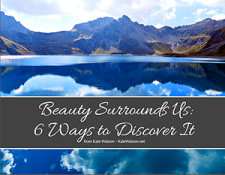
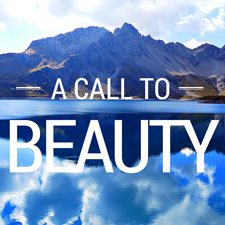








Business Success, Part 3 – On Peers & Enthusiasm » KateWatson.net - […] Part 2 – On Specialty & Skill […]
Business Success, Part 4 – On Market & Pricing » KateWatson.net - […] Part 2 – On Specialty & Skill […]
Business Success, Part 6 – On Doing the Work & Believing in Yourself » KateWatson.net - […] Part 2 – On Specialty & Skill […]
How I Sold 0K My First Year in Business » KateWatson.net - […] I specialized in an in-demand, sells-itself kind of service. […]